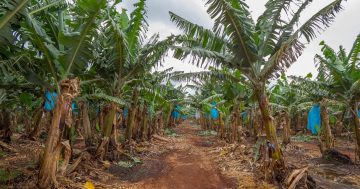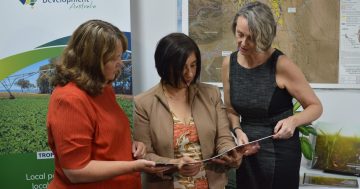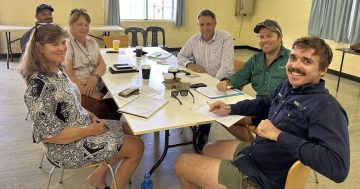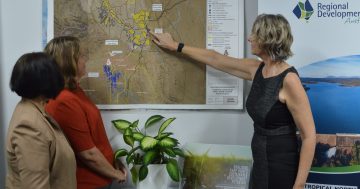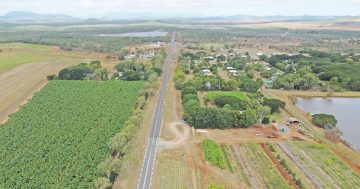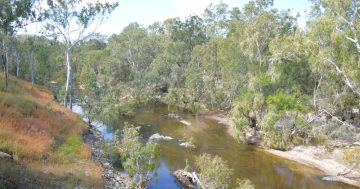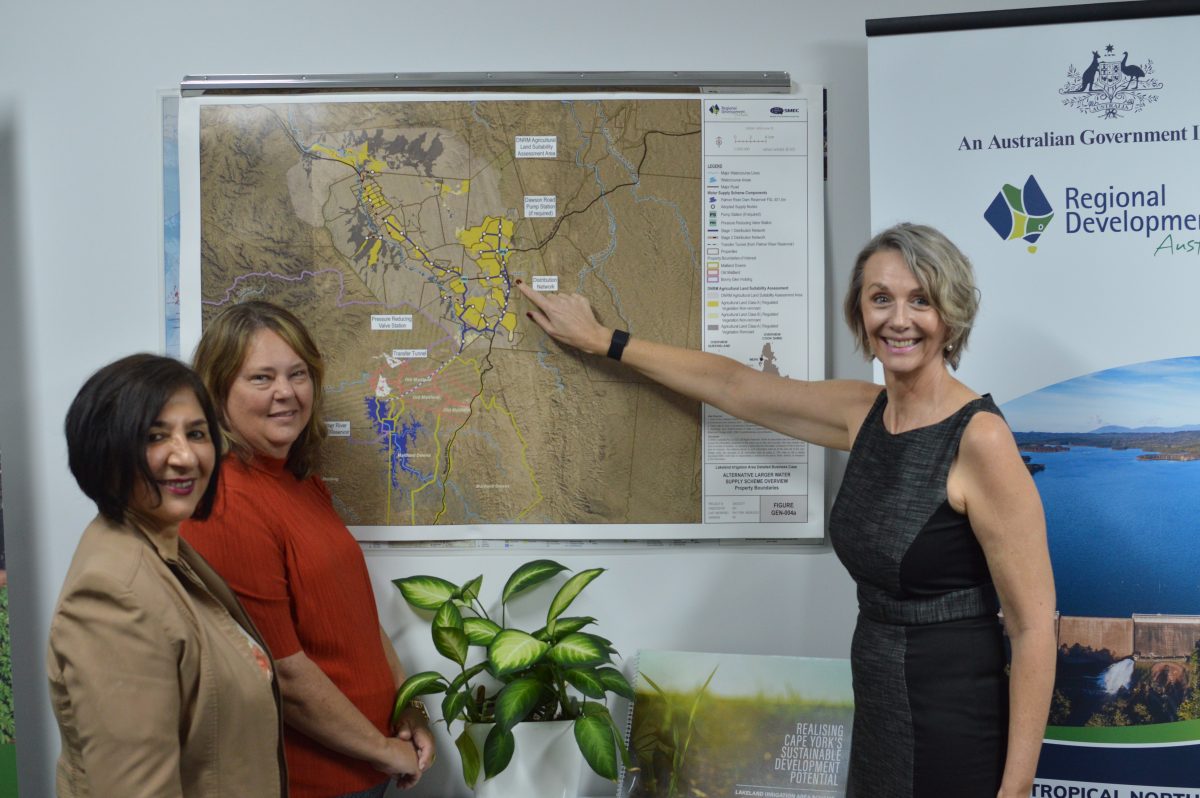
RDA Tropical North chair Professor Hurriyet Babacan, Cook Shire Council Mayor Robyn Holmes and RDA Tropical North chief executive officer Sonja Johnson inspect a map of the planned $1.6 billion Lakeland Irrigation Area Scheme. Photo: Cape York Weekly.
Lakeland could experience a tenfold population increase and inject $500 million into the Cape York economy every year if a dream to realise a large-scale irrigation scheme comes to fruition.
That was the message from Regional Development Australia (RDA) Tropical North and Cook Shire Council on 22 May when they pulled back the curtain on a detailed business case for the Lakeland Irrigation Area Scheme.
At the heart of the plan is a dam on the Palmer River, which would provide the water security needed to crop a forecast 10,050 additional hectares in the Lakeland region.
The $1.6 billion project still needs a funding commitment from the state and federal governments to get off the ground, but Cook Shire Mayor Robyn Holmes said she believed the business case for the scheme stacked up from both economic and social perspectives.
“The Lakeland irrigation scheme will be a significant project in Cook Shire and Cape York Peninsula,” she said.
“It has been long supported by local growers and Traditional Owners, [and] economic growth in the area is expected to be around $500 million [per annum], with significant benefits which will include Indigenous jobs, ecotourism and pathways into the food industry.
“Much-needed health and emergency services will be developed, schools will be built, and residents will have access to supermarkets, trades and services readily available in metropolitan areas.”
The business case identifies Lakeland’s population could spike from about 300 to more than 3,000 on the back of the scheme, and RDA Tropical North chair Professor Hurriyet Babacan said the next step was to convince Canberra and Brisbane of the project’s merit.
“There’s a lot of multiple stakeholders; it’s not just the growers, it’s not just the council; there’s a whole range of stakeholders that can see the benefit of this,” she said.
“And you know, where everyone is talking about economic diversification, we’ve had Cyclone Jasper devastate the communities with alternative ways of diversifying livelihoods …. so, these sorts of schemes can enable that sort of resilience.
“I believe that if all of us are speaking from the same song sheet in the region, we will be able to have our voices heard; so, we have an advocacy task ahead of us, regardless of who comes in, both at the federal and the state level.”
Mayor Holmes said the scheme had the capacity to transform Lakeland into one of the country’s premier food bowls while providing local food security for Cape York residents.
“We already export food to every capital city in Australia out of Lakeland,” she said.
“We export to Japan and we export to Singapore, so this project is going to support those markets, and it’s going to be fresh food.
“It really is going to support that food security moving forward [and] and your export points potentially will be Weipa, Cooktown Airport; the Asian markets aren’t that far away … and then it will continue to go to capital cities by road and the eastern seaboard.”

A map from the detailed business case showing the scope of the proposed $1.6 billion Lakeland Irrigation Area Scheme project. Photo: Supplied.


